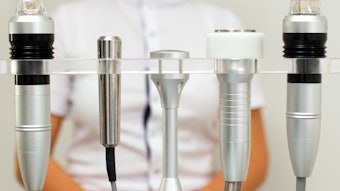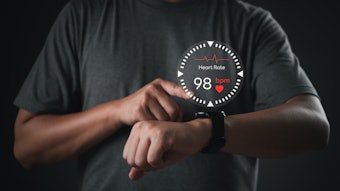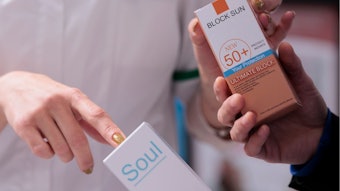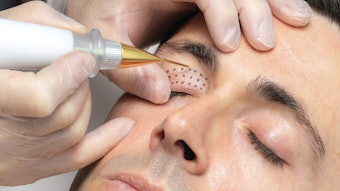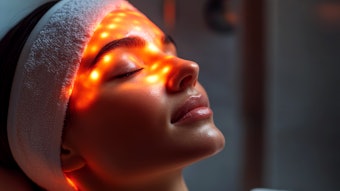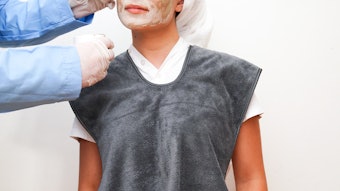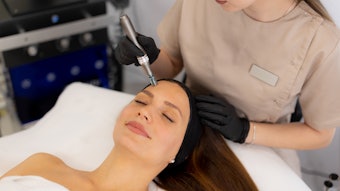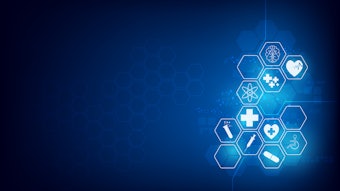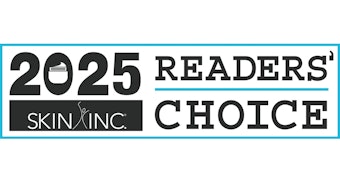An G. Hinds, Catherine Hinds Institute of Esthetics, Woburn, Massachusetts
A mandatory tool for all estheticians would be a loop, a 5x magnification. We spend a lot of time in the early parts of the training on this. You have to have a good eye and any tool you use is only as good as the operator. A loop five diopter is mandatory. You’re not an esthetician unless you have that in your toolbox. The reason why that loop is so important is that you get a clear picture of skin type, dry or oily, you get a host of conditions you see using your senses, looking at it, touching it, smell—a smoker, ill—and listening to the client, looking through the loop. When you magnify it, you have a clear picture of the secretions, thickness, epidermis, dehydration, dead cells. The loop is still the best tool for the esthetician for diagnosis.
The Wood’s lamp as a handheld device and you can use it as a dermal scan. Again, it is only as good as the person interpreting what they are seeing. The tools help explain to the client what the treatment plan is going to be and what the conditions are that need to be addressed. You have a way to look at it so the customer can see how much dehydration, pigmentation they have. It strengthens your hand to recommend a treatment plan for the individual.
There are handheld devices that judge hydration, that look at veins, that look right at a mole or a bit of pigment or a ruby point that are great tools. They are only small areas and are for really close magnification.
In the future, will have better and better magnifiers to look at the skin and be able to project onto a monitor to show how the skin is aging, and if you are looking at acne, how infected is that pustule.
UV Cameras are good for before and afters. In peels, we use the Wood’s lamp to show where there is a lot of stratum corneum and they are more a benefit to the consumer to show that you have done what you’ve said you are going to do. For the esthetician, it is good to see where to exfoliate. We use the Wood’s lamp for chemical peel application, but not for analysis.
Deedee Crossett, president, San Francisco Institute of Esthetics and Cosmetology, San Francisco
Some of the classic tools would be high frequency, steamer, galvanic, Wood’s lamp, brush system, a vacuum or suction. What I find interesting is that those are good, useful tools that work really well. There are all different versions of them … lots of different ways to do the same technology. Lots of estheticians don’t use high frequency and galvanic. Underutilized.
More and more get out of school and don’t know how to use them, after extractions to defuse redness, I have no idea why it’s not a staple item in everybody’s kit. They are going to have better product penetration with galvanic. Contraindications are minimal … although they are really classic machines. They are classic for a reason. Estheticians are getting smarter and more inquisitive and their understanding of the skin is evolving, when they are already using a machine like that, the natural esthetician will pull it out and say “I wonder what it’s doing.” With the skin scope, it is a huge Wood’s lamp and excellent way to show hyperpigmentation, roughness, dryness. There’s a mirror in there for the client and it will freak anyone out. It highlights any areas of concern, it is very easy. The word hyperpigmentation, when we use words like that and the client is laying upside down, I don’t know if they really internalize that means that you have an overabundance of freckles or pregnancy mask.
We learn faster when we hear and see. It adds professionalism for the esthetician, what we’re looking at and diagnosing is really. We’re not there to push product, it’s not a snake oil situation. I see that I have dehydration here and my pores are congested. It’s a really good tool to make sure the esthetician and the client are on the same page. Sometimes what we see is not a concern to the client, we start talking about lightening the skin, we may lose the client because she likes her freckles. It makes it easy for the guest and the skin specialist to be on the same page. The same goes for the digital cameras. They are getting more sophisticated and easier to use for the esthetician to automatically put up a picture, that is really powerful. At the end of the series, they forget what it looked like the first time because they are seeing it gradually and looking at it every day. If I was going to look at trends, there seems to be a trend having more than one service at a time … Lydia Sarfati came out with that 3-1 where you can get everything done at once, moving toward equipment that is multifunctional and if it’s handheld, that is where people are bringing people out from the back room that would encourage them to do a more traditional treatment. Any equipment that can be brought out that is more user-friendly is going to attract more attention. One thing that I was going to mention, for a new esthetician starting out, if they’re going to be doing multiple body treatments, facials, waxing, they need to invest in a bed and esthetics chair that moves up and down, you’re not going to do it; at some point you are going to be ergonomically out of whack. Invest in the bed for the comfort of your guest, but for you … you’re behind that bed 6-10 hours a day.
We had a graduate from one of our first night programs, she was working a corporate job and wanted to get into esthetics and bought used equipment in good shape, documented it and bought insurance right away … she was set up and operating for a couple weeks and the building flooded. She got liability and renter’s insurance. For new estheticians starting out, at the end of the day, make sure you have liability insurance. You need insurance to protect yourselves if in any case you can’t work, you can pay your bills. We also need to make sure if a client comes after us, you’re covered. If you picked up the room and turned upside down, that isn’t covered by the landlord. She was able to restart her business with all new stuff. It could be pretty detrimental if you didn’t have insurance.
Anne Grubek, Anya’s Skin Care, New York
An analyzer it’s a simple piece of equipment, you are checking the moisture of the skin and it is very easy to use. You just press one button to turn it on, you put it on the skin. It’s like a thermometer and you can read the moisture of the skin. You can check it in a variety of places. It is used more for people’s curiosity, so I do it after the treatment to show them that it jumps about 10 points up. After the treatment, the skin is more hydrated. I can show them the numbers before and after. They support the treatment. They see this in the mirror, but it gives you the numbers and readings. How do clients react?
Right now it is curiosity. I am working with a long-time client base, and they know the results and see the results and have no doubt that whatever I do, it works. For the new clients, it makes a point.
Terri Wojak, educator, True University, Chicago
The Wood’s lamp is very important when I’m teaching during chemical peeling treatments and looking for pigment is more superficial or deeper in the skin. It helps you analyze the skin during the consultation and you can see how evenly you’ve applied the acid. I still use a steamer if I’m doing extractions to soften up extractions, as well as magnifying lamps.
We use ultrasound in the office … it helps reduce swelling postsurgically, it helps to induce lymphatic drainage, speed up healing and reduce swelling, as well as to drive products into the skin. It helps stimulate collagen. This is the most up-and-coming.
Steamers will always be around for facials.
New tools are great for building clientele. A seasoned esthetician should be able to look at the skin and be able to tell, like the UV camera. That gives you documentation. UV cameras are going to become an industry standard to see what the treatments are doing. I think they do play a large role.
Skin analyzers will become the standard, it’s a really great way for clients to see what is going. It is great to have for the client, to build a clientele, to show them that you are making a difference for the skin. Often, we do before-and-after pictures with a digital camera. Clients say they haven’t seen that big of a difference and then you show them the picture. A lot of clients need to see that.
